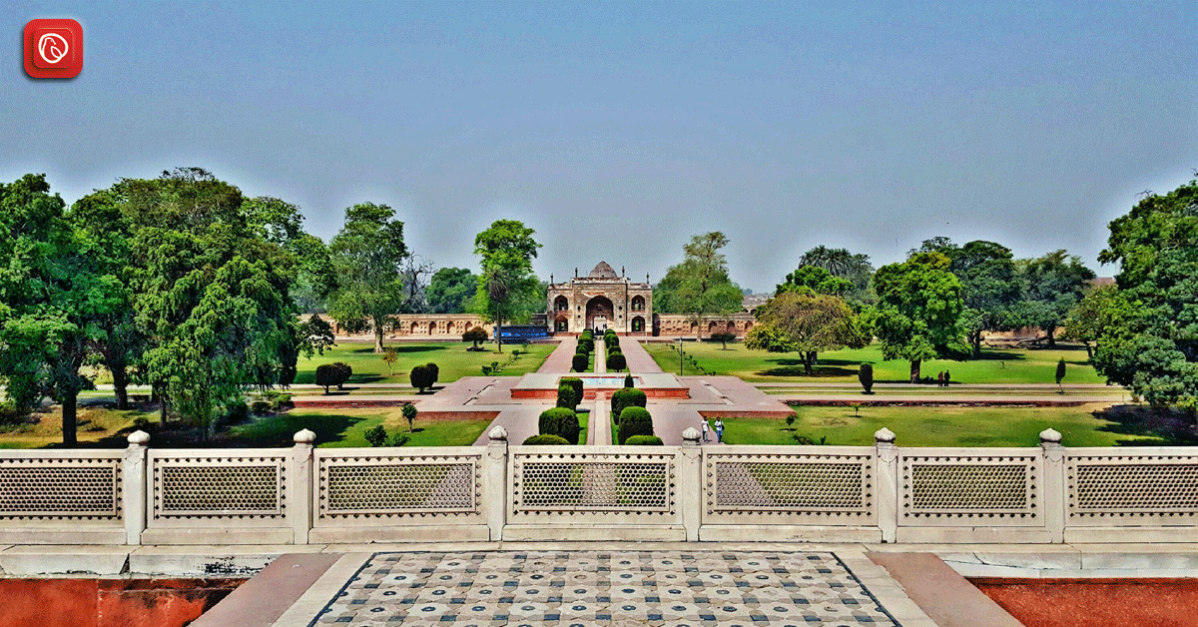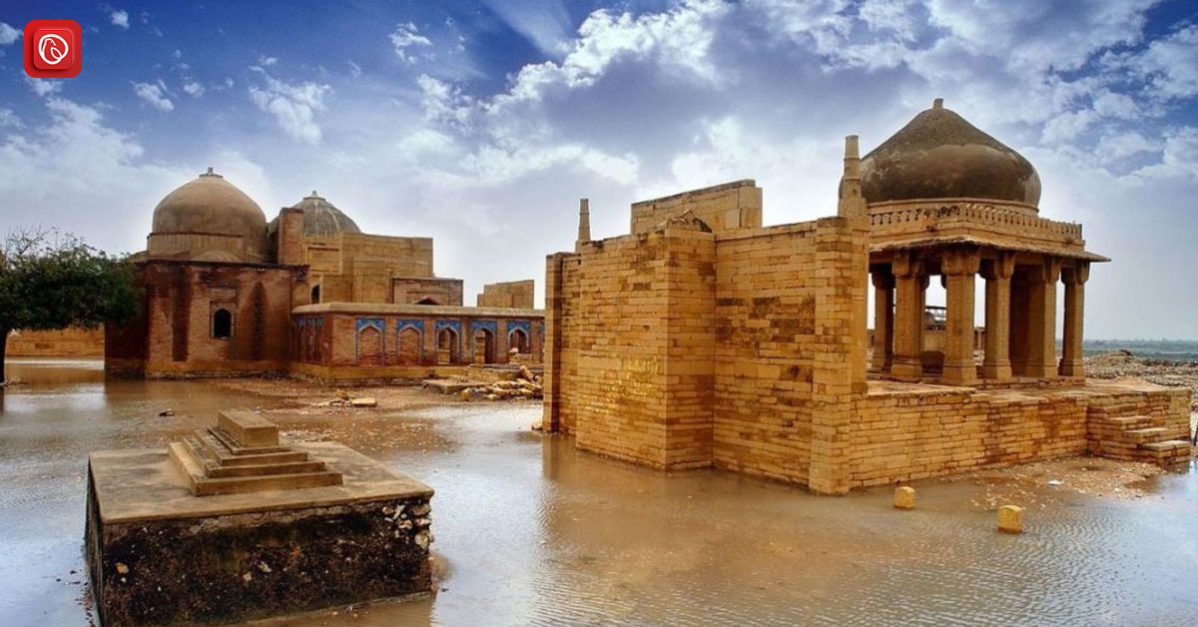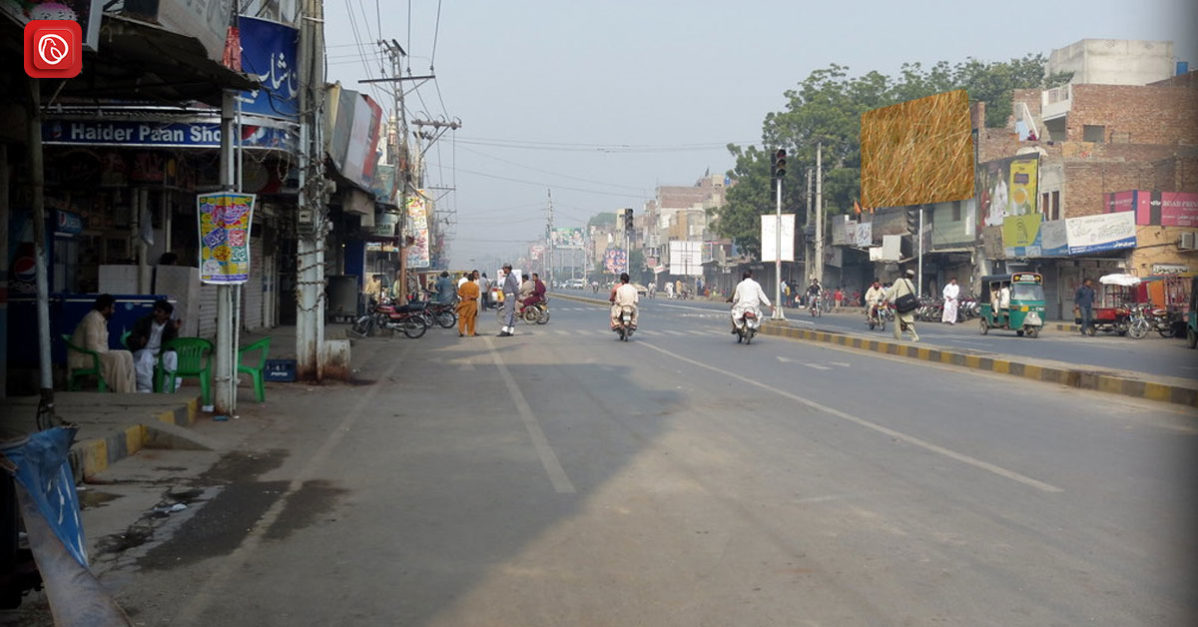Explore the charm of Shahdara, Lahore, where history and modern life come together seamlessly. Positioned along the Ravi River, Shahdara reflects Lahore’s rich heritage with a mix of ancient Mughal sites and contemporary urban developments. From the renowned Shalimar Gardens to the lively local markets, Shahdara offers a journey through time.
Join Graana.com as we wander through its streets, unravelling stories of the past and uncovering hidden gems that make Shahdara a unique destination in the heart of Lahore.
Location
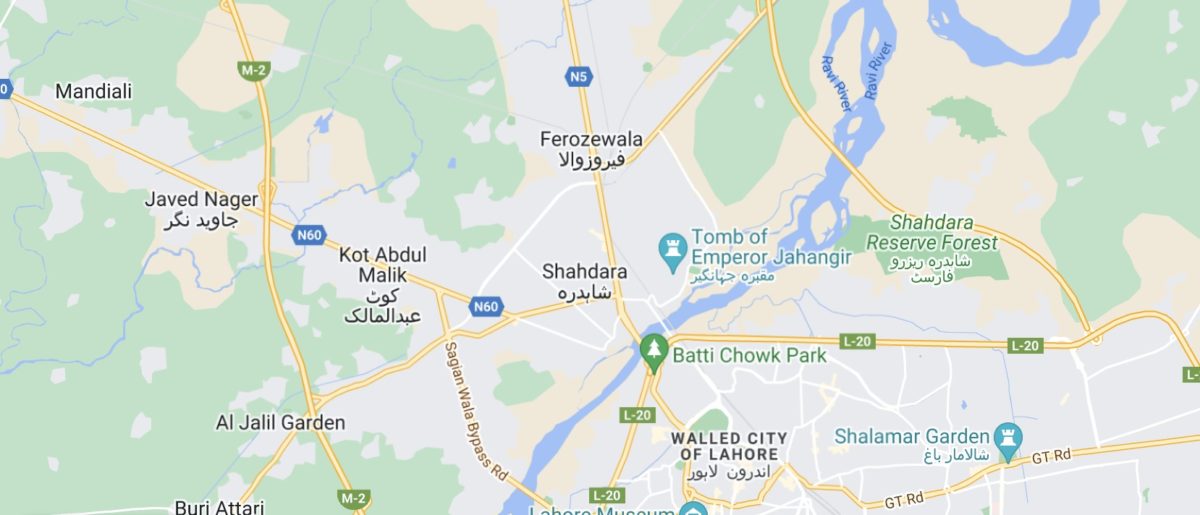
Shahdara, positioned as the primary gateway to Lahore from the directions of Kabul and Kashmir, rests gracefully on the right bank of the Ravi River, standing in juxtaposition with the city of Lahore. This location has historical significance, evolving into a focal point of Mughal architectural and political endeavours shortly after Babur’s conquest of India in 1526. Notably, Babur’s son, Mirza Kamran, contributed to the area’s allure by constructing a garden around 1527, with remnants such as the baradari bearing witness to its Mughal past.
History of Shahdara Lahore
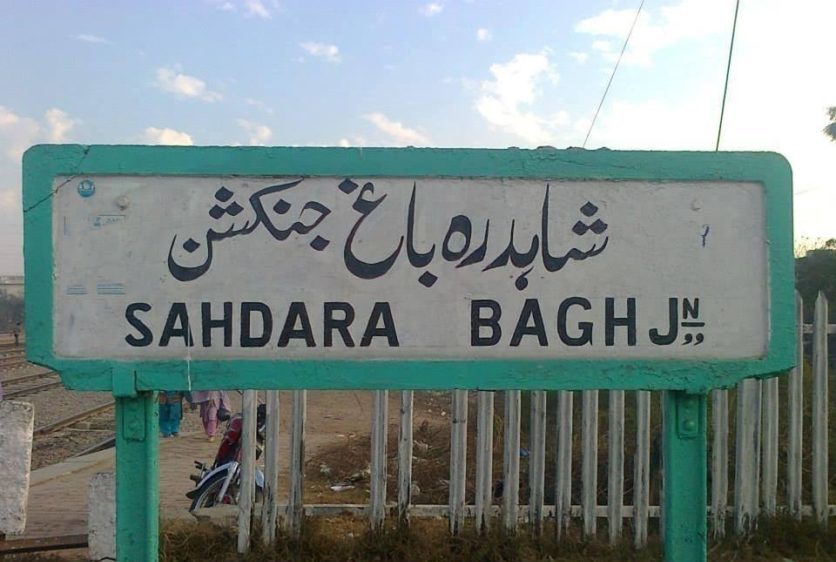
In 1527, Mirza Kamran, son of Babur and brother of the second Mughal emperor, Humayun, contributed to Shahdara’s allure by constructing a garden, evidenced by the enduring remnants of the baradari. The name “Shahdara” made its appearance in the Akbarnama in the mid-1590s, linked to Akbar’s visit to Kashmir in 1589.
Despite the challenge of determining the exact boundaries due to a lack of early Mughal-period textual sources, records from the sixteenth and seventeenth centuries indicate the prevalence of gardens and inns built by imperial and noble patrons. This historical richness is substantiated by a British-era map from 1867.
Dual Functionality in the Early Mughal Period
Shahdara played a dual role in the early Mughal period. It served as a halting place for the Mughal camp on routes leading to Kashmir, Kabul, or the hunting grounds of Sheikhupura. Simultaneously, it functioned as a recreational zone across the river from the Lahore citadel. Notable additions to Shahdara’s landscape during this period include Nur Jahan’s Dilkusha garden, contributing to its multifaceted allure.
Royal Funerary Landscape
Between 1527 and 1645, Shahdara underwent a transformative shift in land use, evolving from a site for pleasure gardens to a royal funerary landscape. This transformation is exemplified by the construction of the tombs of the fourth Mughal emperor, Jahangir, his brother-in-law Asaf Khan, and his wife Nur Jahan. The spatial relationships among these tombs and the serai are distinctive, setting Shahdara apart from other Mughal funerary complexes.
Tourist Attractions Near Shahdara Lahore
Following are some of the top tourist attractions near Shahdara Lahore:
Baradari of Kamran
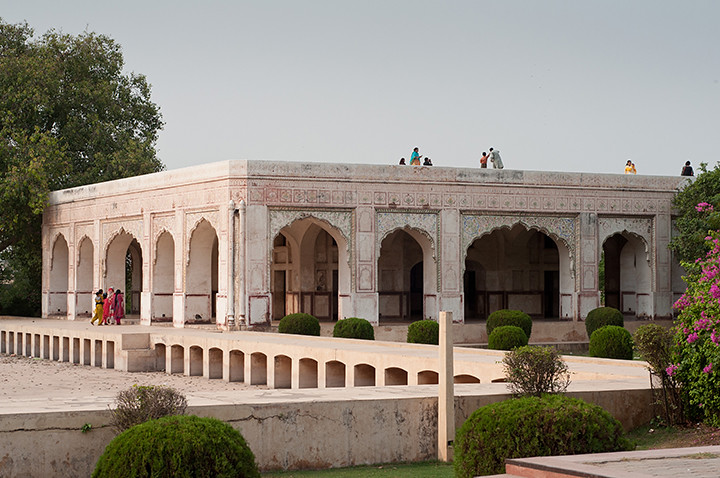
Shahdara, the main entry point to Lahore from Kabul and Kashmir, is situated on the right bank of the Ravi River, opposite Lahore. Following Babur’s conquest in 1526, Mughal royalty, including Mirza Kamran, constructed splendid gardens, with remnants like the baradari still visible.
Shahdara served dual roles in the early Mughal period – a halting place for the Mughal camp en route to Kashmir, Kabul, or Sheikhupura hunting grounds and a recreational zone across the river from Lahore’s citadel. Notably, the transformation from pleasure gardens to a royal funerary landscape occurred between 1527 and 1645, with the tombs of Jahangir, Asaf Khan, and Nur Jahan constructed in close proximity. This spatial relationship distinguishes Shahdara from other Mughal funerary sites.
Kamran’s Baradari, part of the earliest Mughal garden in Lahore, was established around 1527 on the west bank of the River Ravi. Initially a meeting place for Mughal princes, the garden featured an eight-point star-shaped pool. Unfortunately, later restoration work has compromised its historical integrity.
Tomb of Jahangir
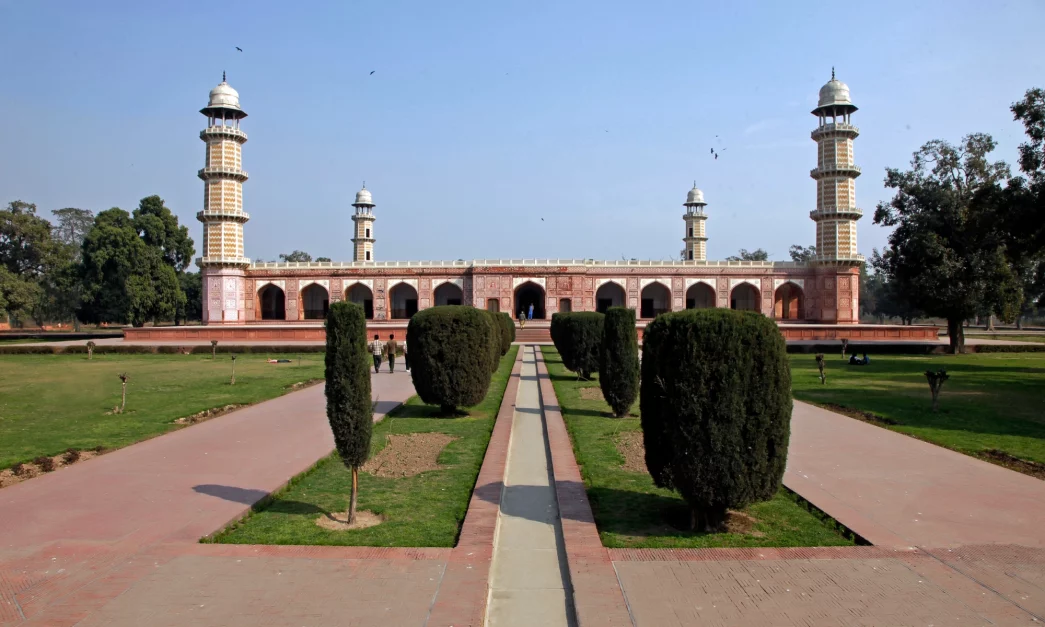
Jahangir’s tomb, a masterpiece of Mughal architecture, stands on the grounds of the former Bagh-i-Dilkusha, a garden originally designed by his wife, Empress Nur Jahan. Commissioned by Shah Jahan after Jahangir’s demise in Kashmir in 1627, this iconic tomb took a decade to complete.
The architect’s identity remains elusive, but Chandar Bhan, a historian linked to Char Chaman, supervised the site for a period. Accessible through the Akbari serai on the west, the walled tomb garden boasts a grand entrance adorned with intricate muqarnas in red sandstone. The Akbari Sarai features gateways, and to the west, a pre-Mughal mosque adds historical charm.
The square garden surrounding the tomb was ingeniously designed, following the Chahar Bagh pattern, dividing it into four parts with water channels. Fountains graced pools, creating a mesmerising spectacle as water flowed over the chutes.
To sustain this water feature, eight wells located just outside the enclosure wall were used. While the original vegetation has disappeared, remnants of colonial-era fruit trees now dot the landscape. Today, this site has transformed into a beloved picnic spot for the people of Lahore.
Tomb of Asaf Khan
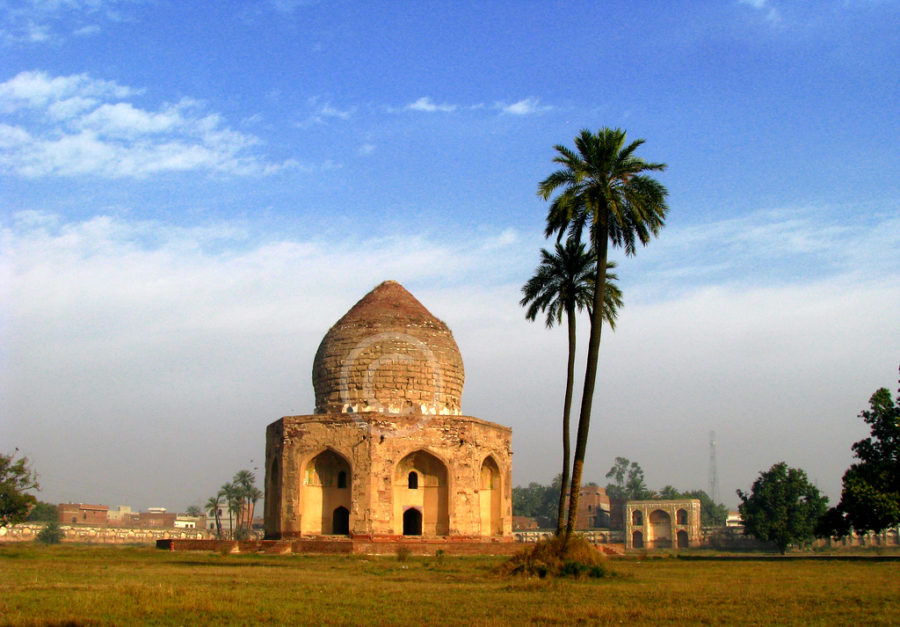
Asaf Khan, Jahangir’s brother-in-law and the Punjab governor when the emperor passed away in 1627, later served as Commander-in-Chief under Shah Jahan until his own death in 1641. Following Asaf Khan’s demise, Shah Jahan instructed the construction of his tomb immediately to the west of Jahangir’s tomb.
The tomb itself is octagonal and is situated within a Chahar Bagh, featuring water channels and pathways. While the walls were originally adorned with glazed tiles and the dome with marble facing, the dome’s distinct profile resembles that found in the tomb of Hamza Ghaus in Sialkot.
Nur Jahan’s Tomb
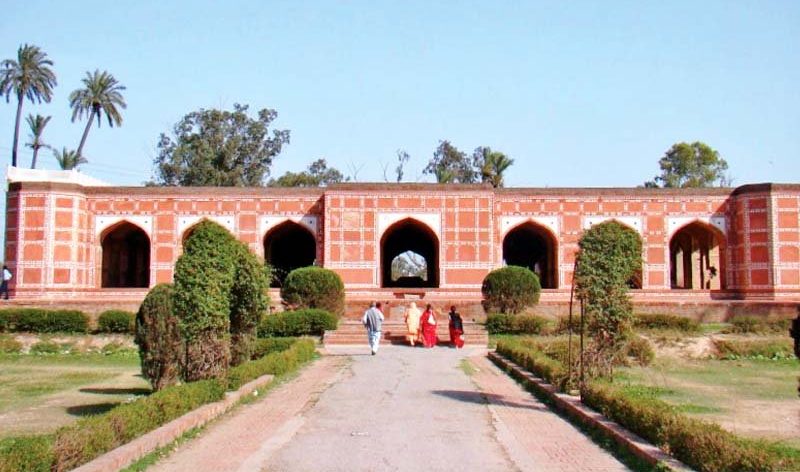
Nur Jahan, the widow of Jahangir, passed away in 1645, and her final resting place lies to the west of her brother Asaf Khan’s tomb. It’s believed that she personally commissioned the construction of her tomb while she was alive.
Unfortunately, the tomb’s stone cladding has been removed over time, and the surviving elements of the garden suffered irreversible damage when a railway line was constructed by the British in the late nineteenth century, disrupting the landscape between the tombs of the two siblings.
Lahore Fort to Shahdara, River Crossing
There were two primary river crossings from Shahdara to Lahore. One, located near Kamran’s baradari, followed the contemporary route leading to the Taksali and Roshnai gates of the Lahore Fort. The road from Shahdara town extended directly southward, connecting to the Khizri and Masti gates of the city.
FAQs on Shahdara Lahore
Here are some of the top FAQs on Shahdara Lahore:
What is Shahdara in Lahore famous for?
Shahdara in Lahore is famous for its historical significance, including the Shalimar Gardens, a UNESCO World Heritage Site, and various Mughal-era structures. It served as a prominent entry point to Lahore and has a rich cultural and architectural heritage.
What are the historical attractions in Shahdara?
Key historical attractions in Shahdara include the Shalimar Gardens, Jahangir’s Tomb, Kamran’s Baradari, and the tomb of Asaf Khan. These sites reflect the Mughal influence on the region.
How can I reach Shahdara from the Lahore city centre?
Shahdara is easily accessible from Lahore city centre by road. There are various transportation options, including buses, taxis, and rickshaws. The city’s well-connected road network makes it convenient to travel to Shahdara.
What is the significance of Shalimar Gardens in Shahdara?
The Shalimar Gardens, commissioned by Emperor Shah Jahan, are one of the most significant attractions in Shahdara. Known for their Mughal garden design, these gardens feature terraces, fountains, and pavilions, showcasing the grandeur of Mughal landscaping.
Are there any modern amenities in Shahdara?
Shahdara has evolved to incorporate modern amenities, including markets, educational institutions, and healthcare facilities. While retaining its historical charm, the area has adapted to cater to contemporary needs.
What is the historical background of Shahdara in Lahore?
Shahdara has a rich history dating back to the Mughal era. It was a site of Mughal architectural and political activity, with gardens and structures built by Mughal princes and nobles. The area has witnessed transformations over the centuries, contributing to its historical significance.
Is Shahdara a popular tourist destination in Lahore?
Yes, Shahdara is a popular tourist destination in Lahore, especially for history enthusiasts. The Mughal-era monuments, gardens, and tombs attract visitors interested in exploring the cultural and architectural heritage of the region.
What are some of the challenges?
Challenges faced by Shahdara today may include urban development pressures, conservation of historical sites, and managing the balance between preserving the heritage and meeting modern infrastructure needs.
Can I find accommodations in Shahdara?
While Shahdara may not be a primary location for accommodations, there are various lodging options available in Lahore city centre. Visitors can choose from hotels, guesthouses, and other accommodations, and travel to Shahdara for exploration.
Are there tour guides available for Shahdara’s historical sites?
Guided tours are often available for the historical sites in Shahdara, providing visitors with insights into the rich history and architecture of the region. Local tour operators or guides in Lahore may offer such services.
For more information, visit Graana.com.
